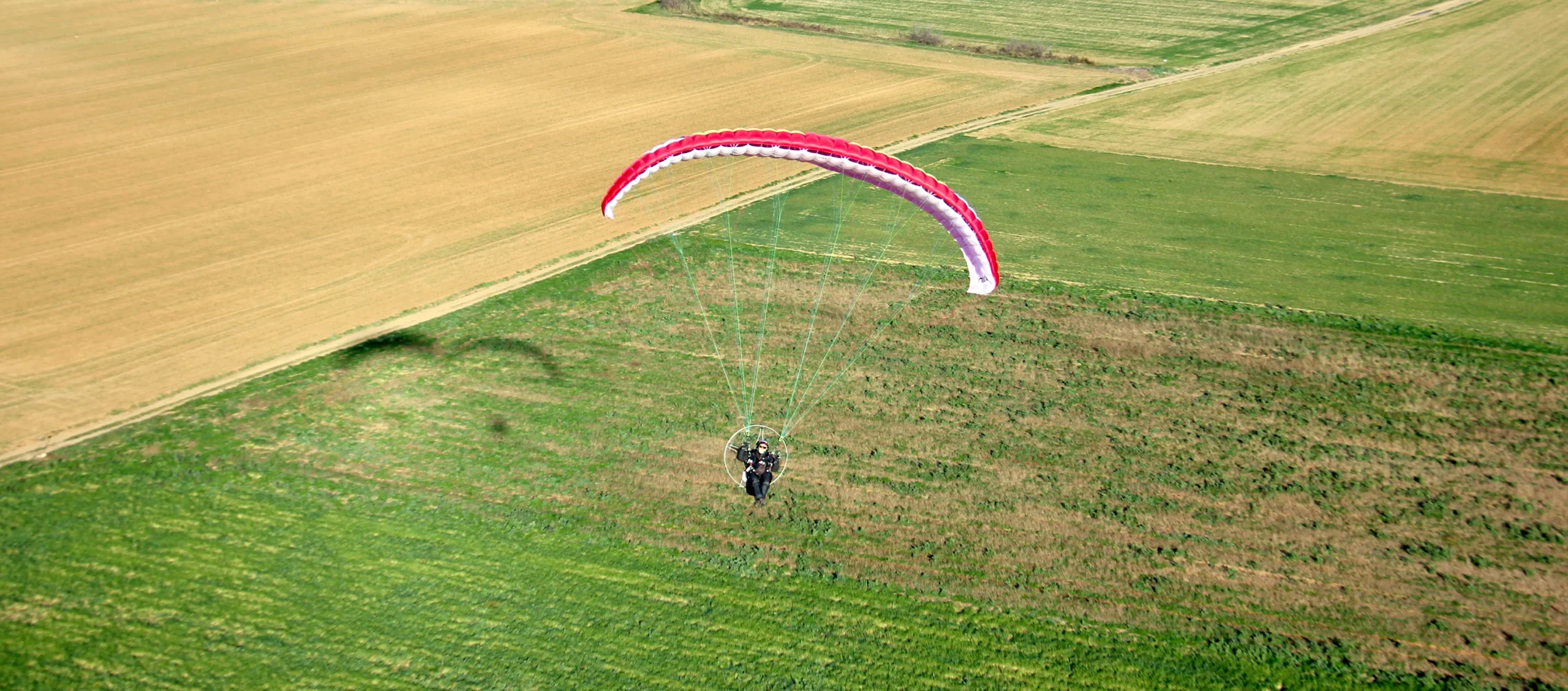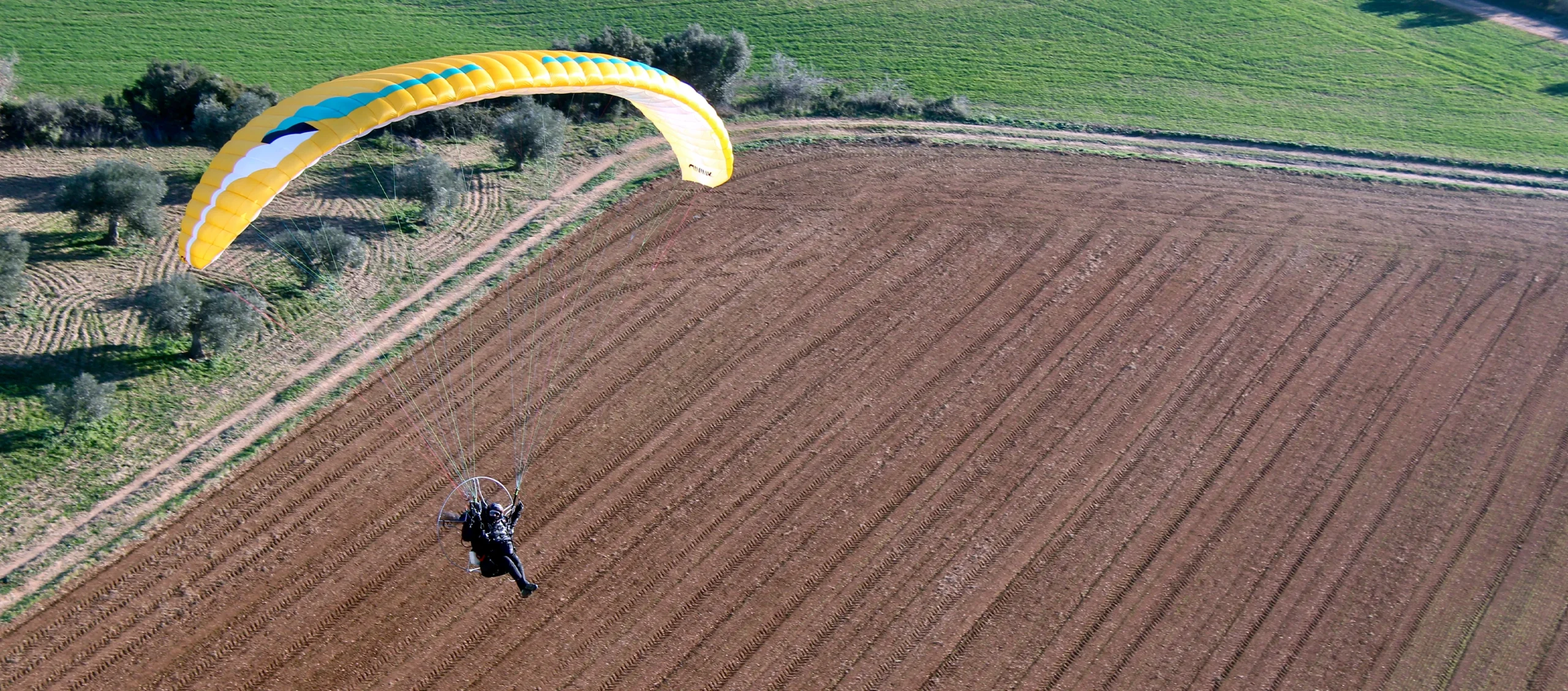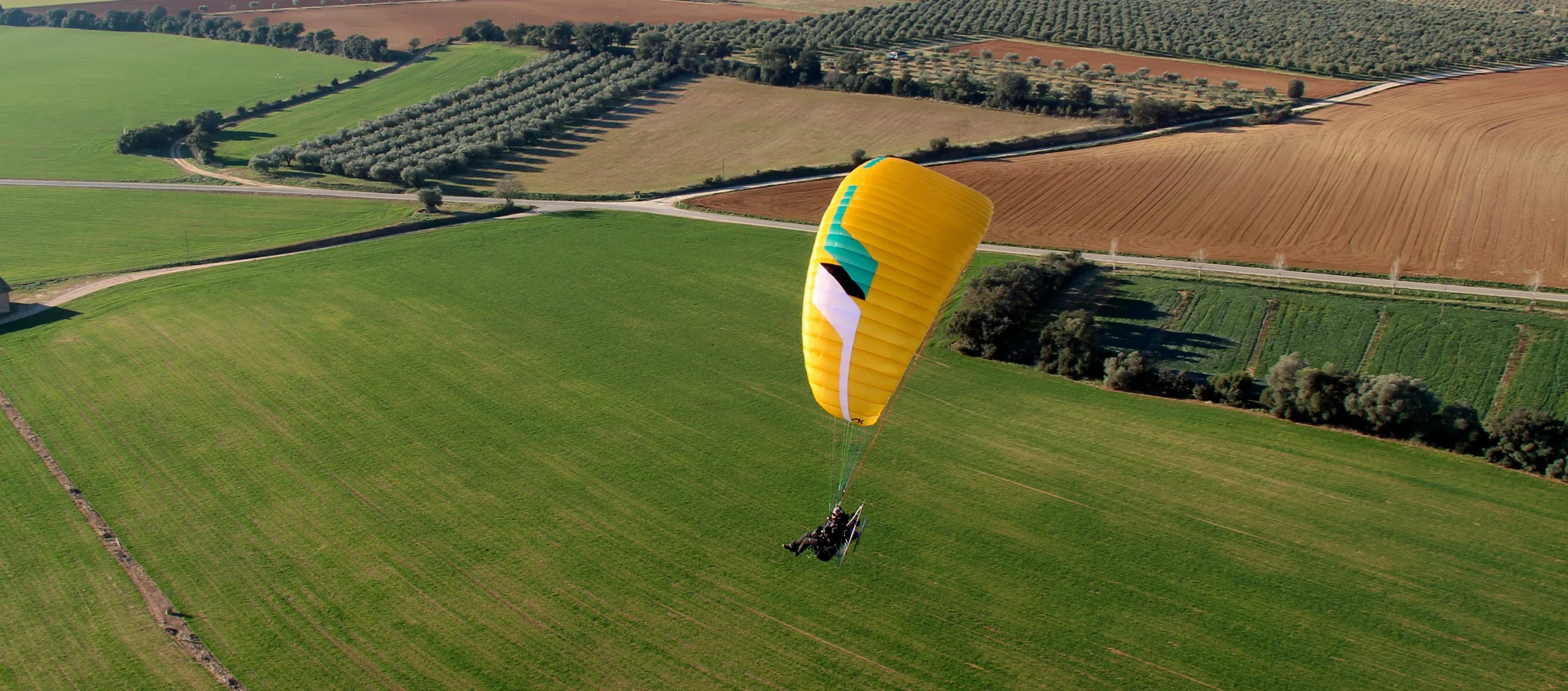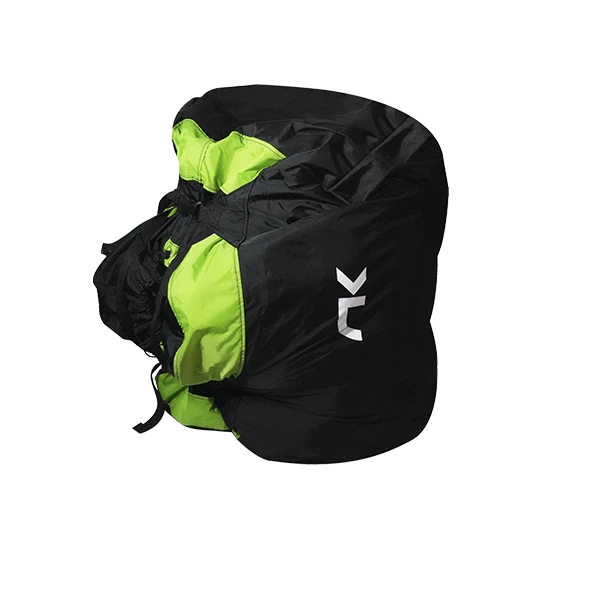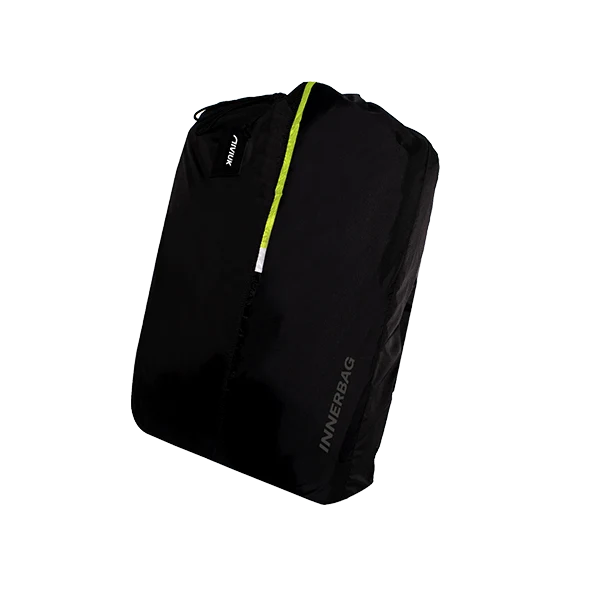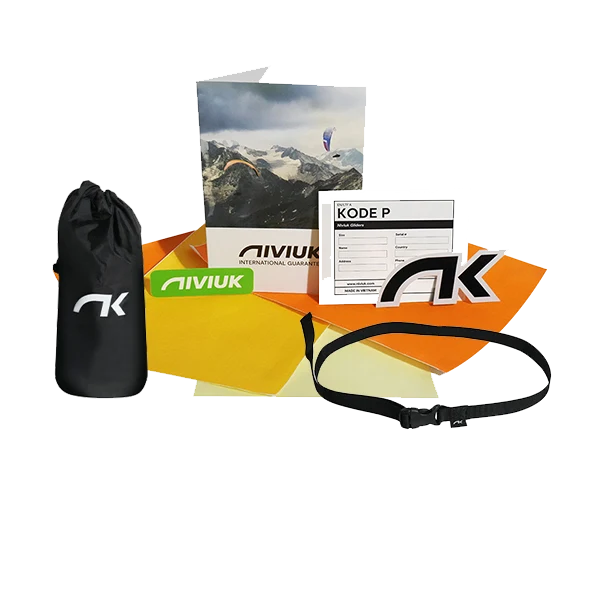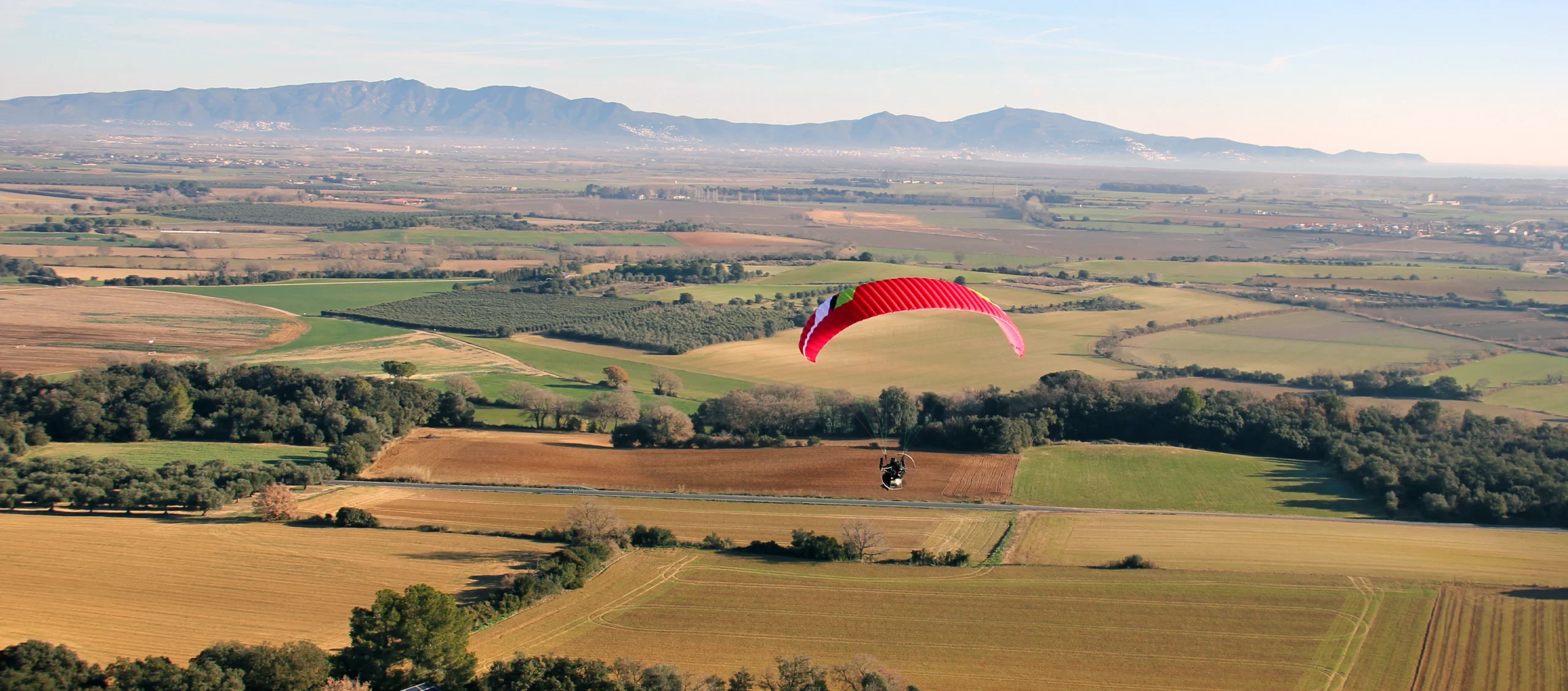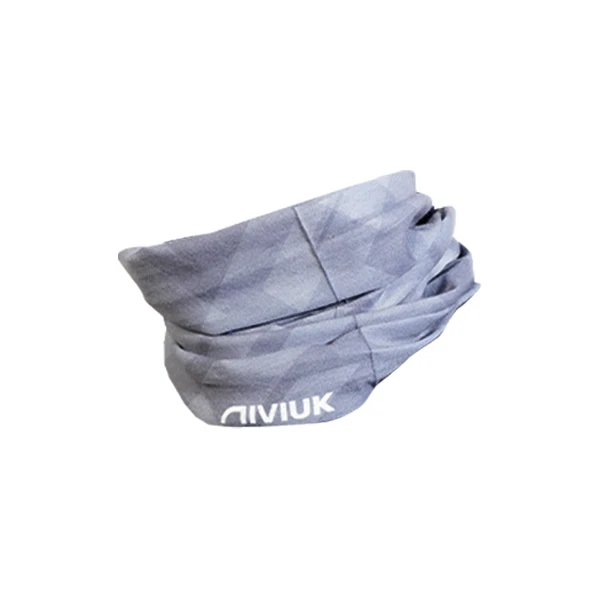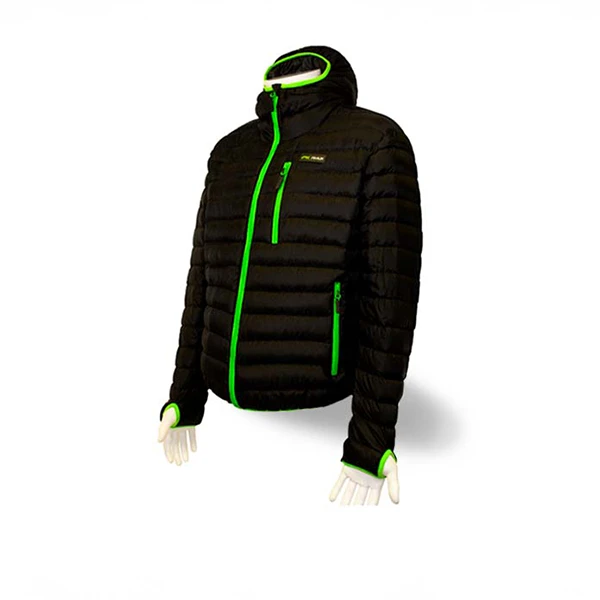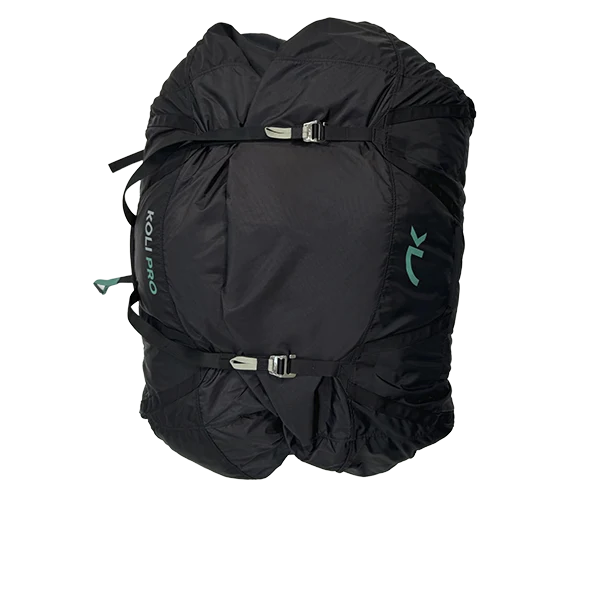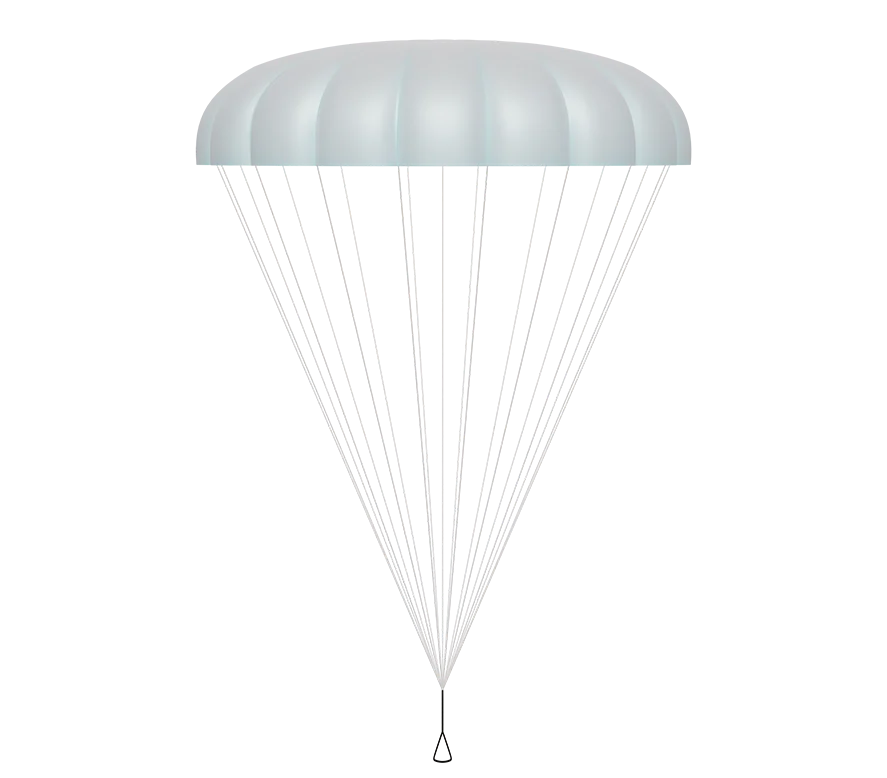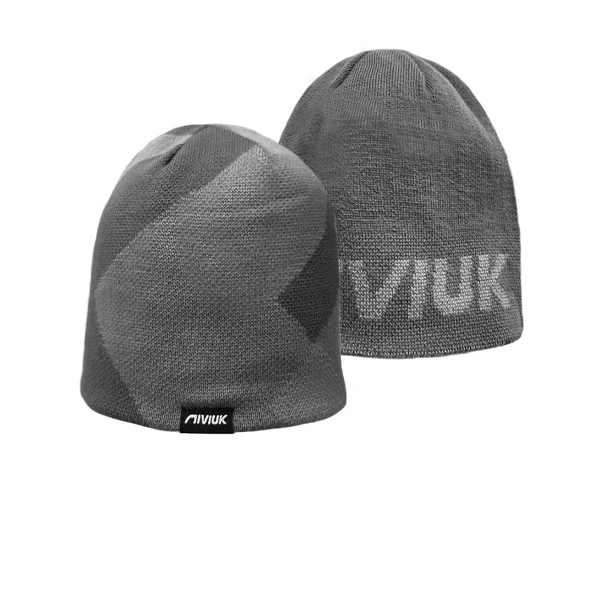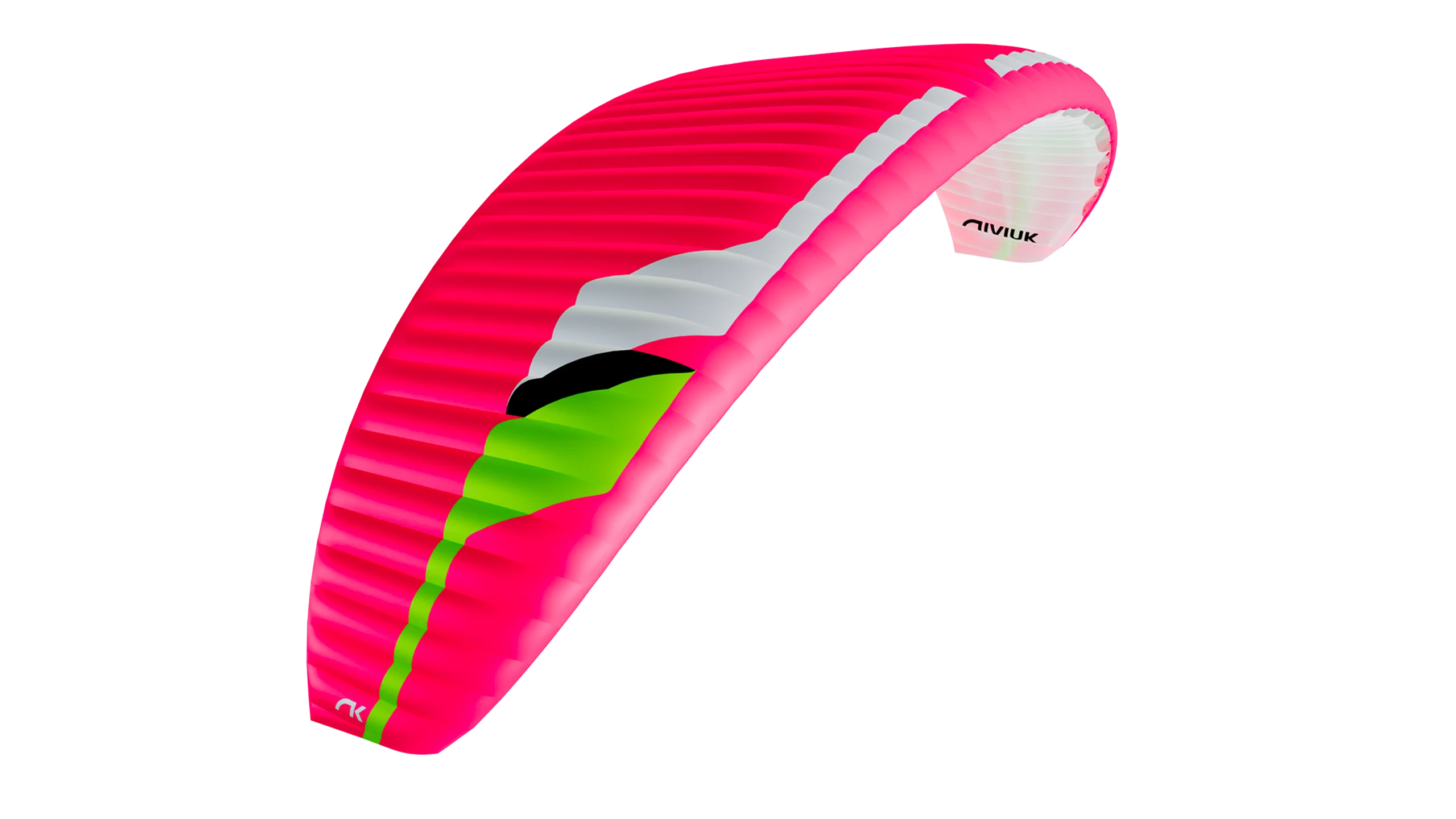Wilko
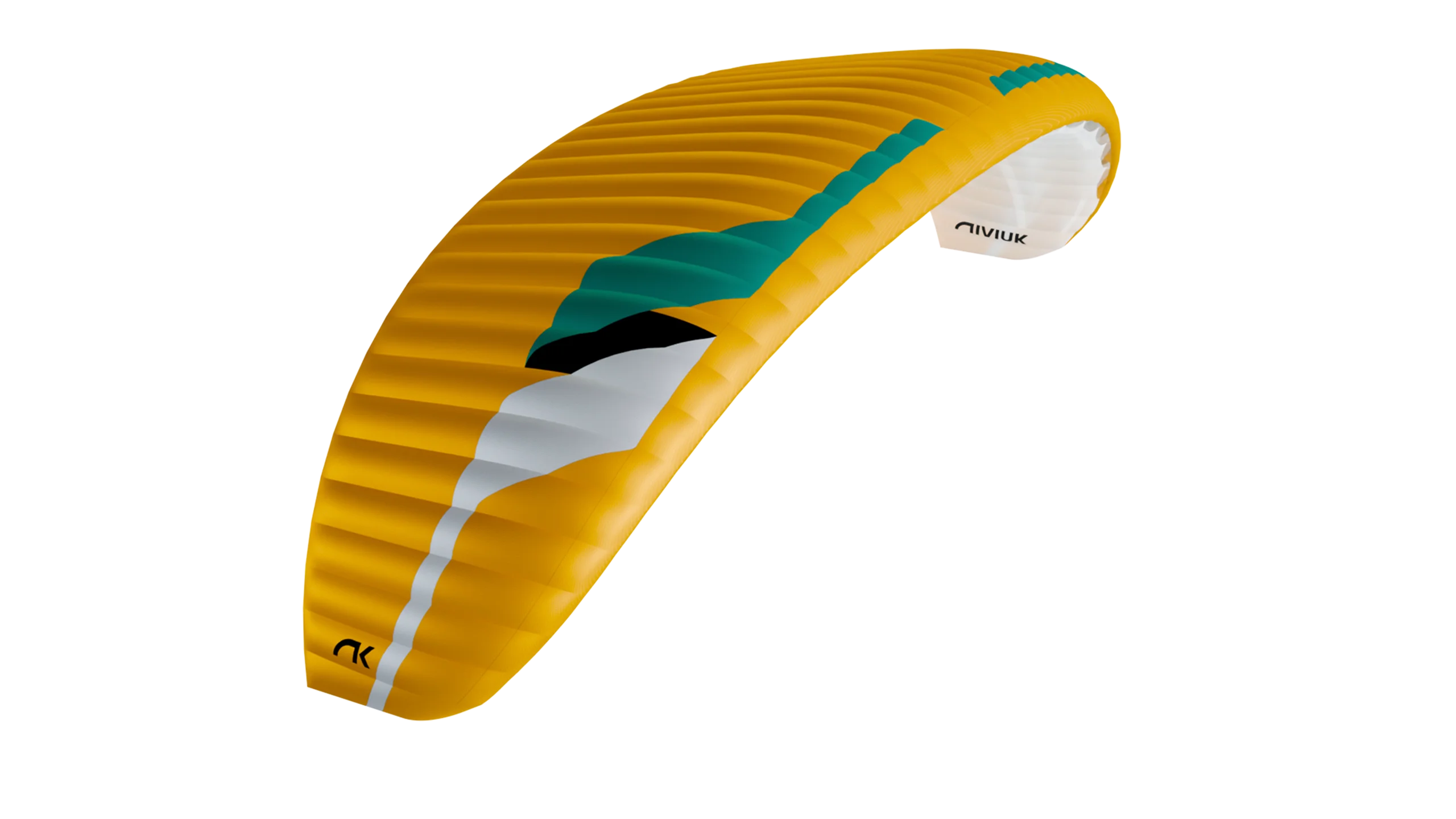
Take your first steps in the world of paramotoring with the Wilko. Start flying in complete safety and peace of mind, thanks to a stable wing that will give you complete confidence. With accessible and simplified handling, launches and landings will be easy and controlled. Learning to fly has never been easier.
Entry-level and training
Certified EN A, the Wilko is perfect for people who want to start paramotoring. An accessible and safe glider, ideal for learning the basic techniques of flying and gaining confidence progressively.
Paramotor schools
Designed to meet the needs of professionals in paramotor schools, allowing them to teach their students comfortably and efficiently. It is stable and very easy to use.
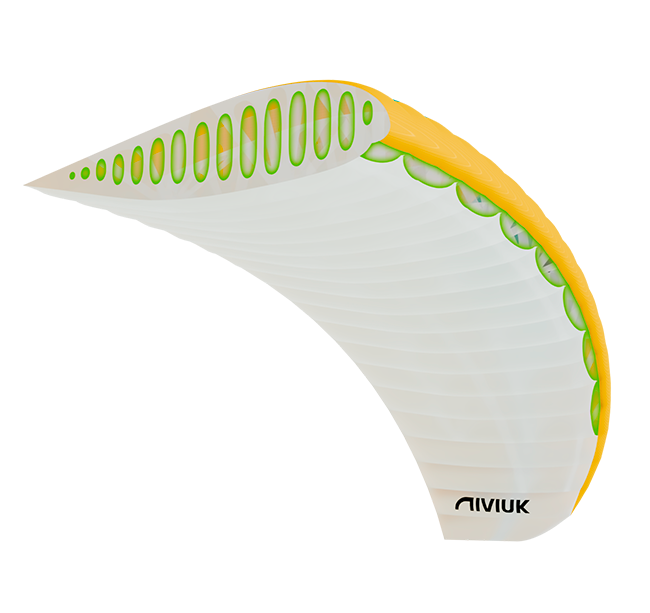
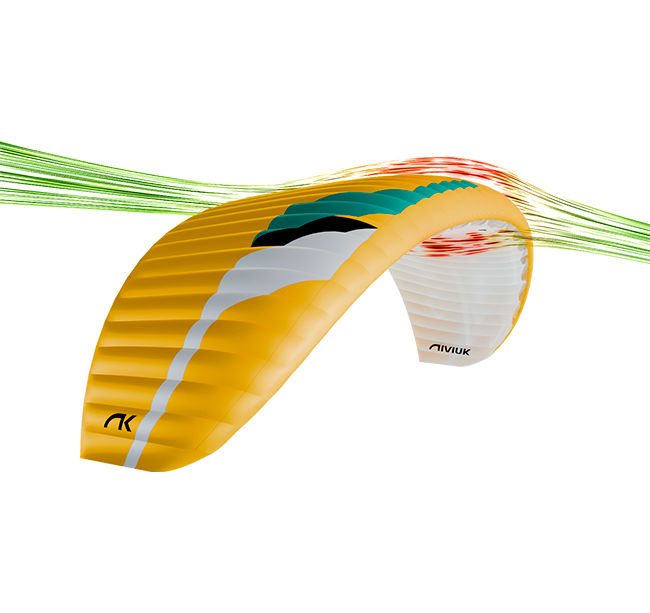

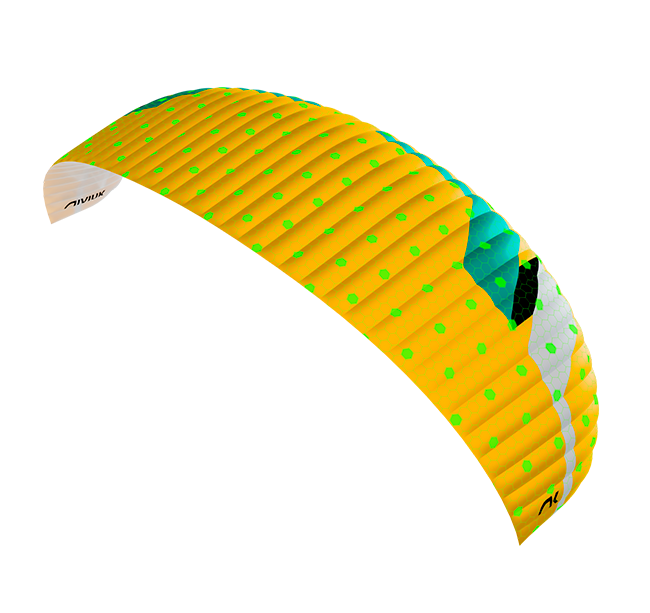
Easy to inflate in all wind conditions. The air inlets and the internal structure are designed so that during take off the centre inflates first, ensuring a progressive rise. The air is displaced to the sides, distributing the internal pressure in a controlled and stable manner to avoid asymmetric inflation.
On approach and landing, the Wilko provides exceptional control at low speeds thanks to its late stall point. In addition, it facilitates good flare and speed retention for a smooth touch down.
The Wilko is self-stabilising after every manoeuvre and has a gradual response to pilot inputs. It has the ability to filter out turbulence to improve pilot comfort and maintain stability on all axes.
Easy to control and very intuitive to fly, it allows the pilot to gain experience quickly, while maintaining safety at all times and in all phases of flight.
The Wilko is very accessible and easy to fly thanks to a low aspect ratio of 4.75, a reduced number of cells and the arc of the canopy. It is a compact and solid glider, with no pitch and roll.
With a long brake travel, it avoids abrupt reactions in piloting and allows students to learn with full confidence and a good margin of error.

Easy to inflate in all wind conditions. The air inlets and the internal structure are designed so that during take off the centre inflates first, ensuring a progressive rise. The air is displaced to the sides, distributing the internal pressure in a controlled and stable manner to avoid asymmetric inflation.
On approach and landing, the Wilko provides exceptional control at low speeds thanks to its late stall point. In addition, it facilitates good flare and speed retention for a smooth touch down.

The Wilko is self-stabilising after every manoeuvre and has a gradual response to pilot inputs. It has the ability to filter out turbulence to improve pilot comfort and maintain stability on all axes.
Easy to control and very intuitive to fly, it allows the pilot to gain experience quickly, while maintaining safety at all times and in all phases of flight.

The Wilko is very accessible and easy to fly thanks to a low aspect ratio of 4.75, a reduced number of cells and the arc of the canopy. It is a compact and solid glider, with no pitch and roll.
With a long brake travel, it avoids abrupt reactions in piloting and allows students to learn with full confidence and a good margin of error.

3DL technology is an adjustment of the fabric at the leading edge of the wing to control the ballooning and the creases that are generated by the curvature in this area. The leading edge is then divided into sub-panels which are sewn into each of the cells at the front of the paraglider. As a result, the leading edge of the wing is perfectly tensioned, which benefits the wing in performance and durability.
A good comparison is a rugby ball. In order to produce its characteristic oval shape without creases, its cover is made of several panels – not of just one piece.
The application of this innovation, in conjunction with the 3DP, is key to converting the perfect shape from 2D to 3D.
The RAM Air Intake system is based on the inward orientation of the air inlets in the profile so that they allow an optimum internal pressure at all angles of attack.
The result? Having greater internal pressure means better buffering of turbulence, greater consistency of the profile shape across the speed range. Excellent handling at low speed is achieved by allowing the pilot to extend the braking limit, so there is a lower risk of collapse and consequently, greater control and stability.
This technology seeks to implement the best orientation of the cloth on each panel according to its location on the leading edge. If the cloth pattern is correctly aligned with the load axes, the cloth suffers less deformation flight after flight, so the leading edge maintains its shape better and remains stronger over time.
The design of our paraglider and paramotor wings has evolved a lot over the years, with a positive and specific focus on the leading edge.
Thanks to this technology and 3DL, a perfect modelling of the panels and an exact representation from 2D to 3D is achieved.
Nitinol is a combination of 50% nickel and 50% titanium. The incorporation of Nitinol rods in the profile increases the performance of the wing, especially in three areas:
- Compared to nylon rods, the weight of the wing is reduced by 13%.
- Nitinol has two essential characteristics: shape memory and enormous elasticity. As a result, the rods retain their optimum shape even after an ultra-compact or incorrect folding, so that the wing is not deformed. This will always be the case unless the radius at the point of curvature is less than 1 cm.
- The leading edge shape is much more rigid and uniform which results in a much more consistent and progressive inflation and therefore an easier take off. The profile is taut at all times, without creases, and fully optimised for all flight phases.
In addition, the rods have a plastic protector at their ends to prevent any damage to the fabric of the wing.
Nitinol is now featured in all our wings.
Preparation for flying is very simple. The Wilko is a 3-liner with very simple risers and line layout, with colour-coded lines for easy identification.
The flatter arc in the centre of the canopy is designed to maximise the stability of the wing. The Wilko remains stable on all three axes during all phases of flight.
The Wilko is very durable thanks to the built-in Nitinol rods. The profile is able to withstand countless hours of inflation, packing and unpacking by students.
The leading edge air inlets and internal slot distribution have been structured to optimise the progressive inflation process and maintain the stability of the wing during launch.
The leading edge design contains an extra longitudinal seam and an ideal, distortion-free tension, based on 3DP technology for a crease-free profile and to preserve the durability of the glider.
The distribution of loads generated in flight has been improved with a new internal design of ribs and diagonals, and with reinforced attachment points.
| 22 | 24 | 26 | 28 | 31 | |||
|---|---|---|---|---|---|---|---|
| CELLS | NUMBER | 39 | 39 | 39 | 39 | 39 | |
| ASPECT RATIO | FLAT | 4,75 | 4,75 | 4,75 | 4,75 | 4,75 | |
| PROJECTED | 3,69 | 3,69 | 3,69 | 3,69 | 3,69 | ||
| AREA | FLAT | m² | 22 | 24 | 26 | 28 | 31 |
| PROJECTED | m² | 19,15 | 20,90 | 22,64 | 24,38 | 26,99 | |
| SPAN | FLAT | m | 10,22 | 10,68 | 11,11 | 11,53 | 12,14 |
| CHORD | MAXIMUM | m | 2,64 | 2,76 | 2,87 | 2,98 | 3,14 |
| LINES | TOTAL | m | 221 | 231 | 241 | 251 | 264 |
| MAIN | 2+1/4/3 | 2+1/4/3 | 2+1/4/3 | 2+1/4/3 | 2+1/4/3 | ||
| RISERS | NUMBER | A+A’/B/C | A+A’/B/C | A+A’/B/C | A+A’/B/C | A+A’/B/C | |
| TRIMMERS | mm | 100 | 100 | 100 | 100 | 100 | |
| GLIDER WEIGHT | kg | 4,52 | 4,81 | 5,14 | 5,43 | 5,90 | |
| TOTAL WEIGHT IN FLIGHT PG (EN) | MIN-MAX | kg | 50-70 | 60-80 | 75-95 | 90-115 | 105-135 |
| TOTAL WEIGHT IN FLIGHT PPG (DGAC) | MIN-MAX | kg | 50-100 | 60-115 | 75-130 | 90-145 | 105-160 |
| IDENTIFICATION/CERTIFICATION | DGAC/EN A | DGAC/EN A | DGAC/EN A | DGAC/EN A | DGAC/EN A |
The total weight of the wing may differ ±2% due to variations in the weight of the fabric supplied by the manufacturers.
Wilko
It contains an 8-digit code that, when entered in the MyNiviuk section, can be used for product registration, to carry out procedures and request maintenance.


